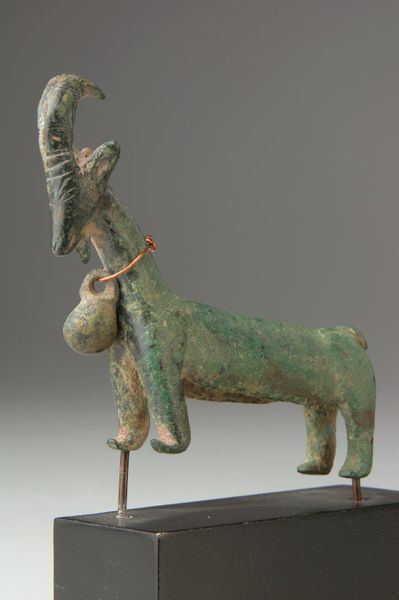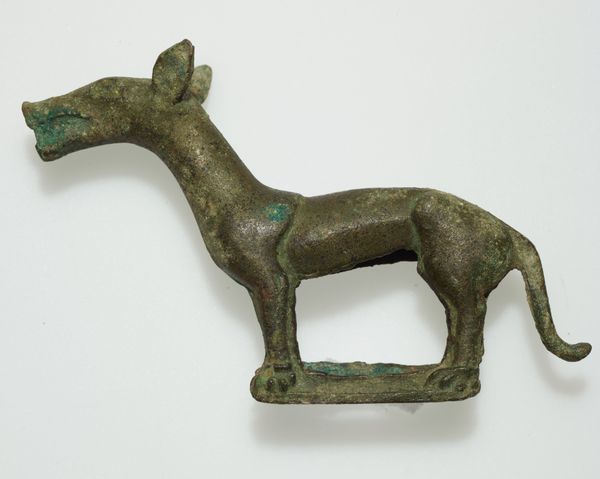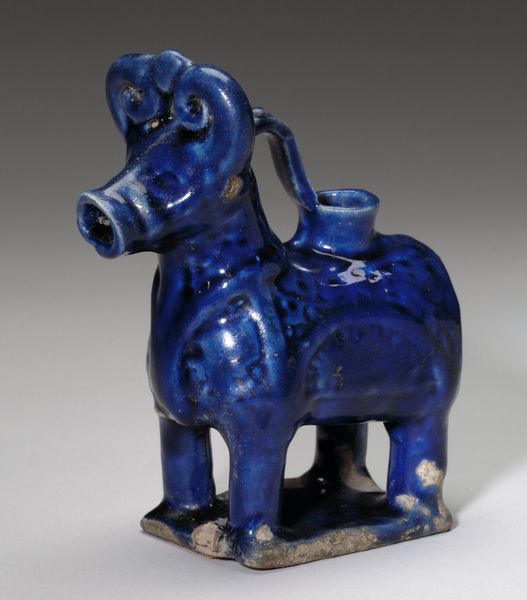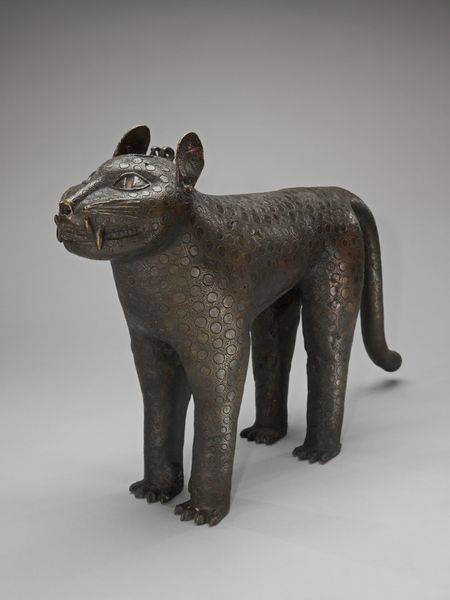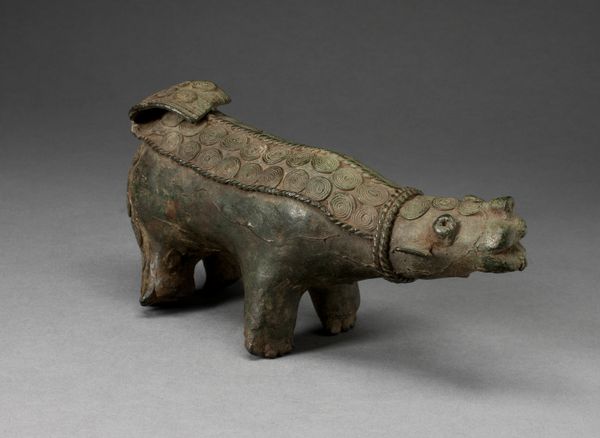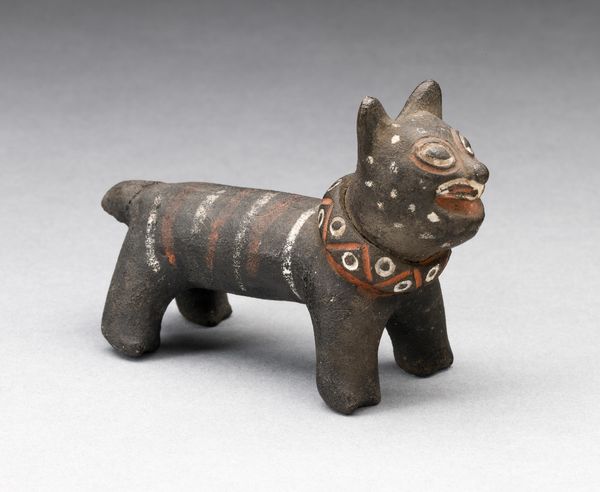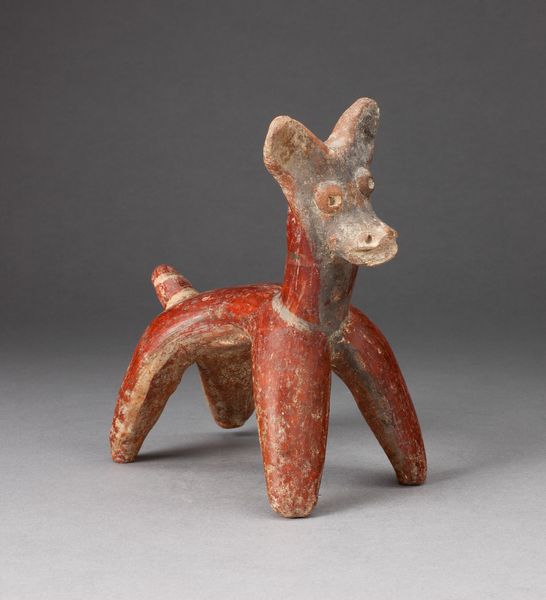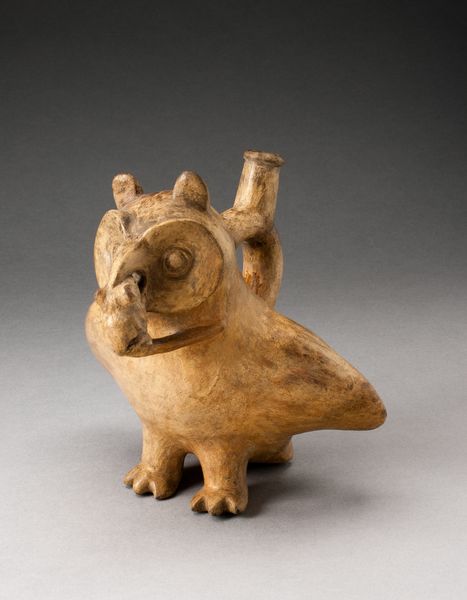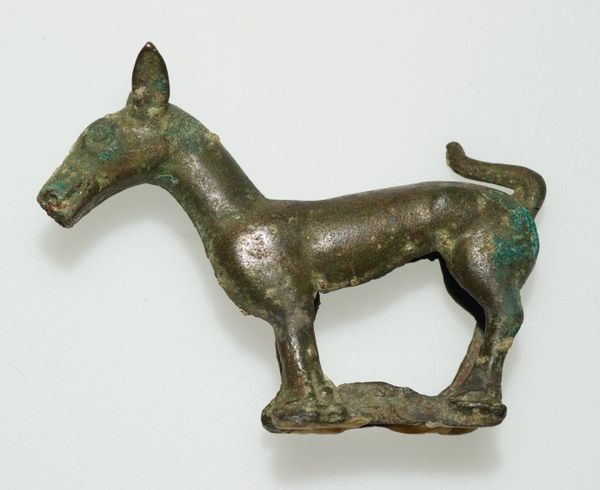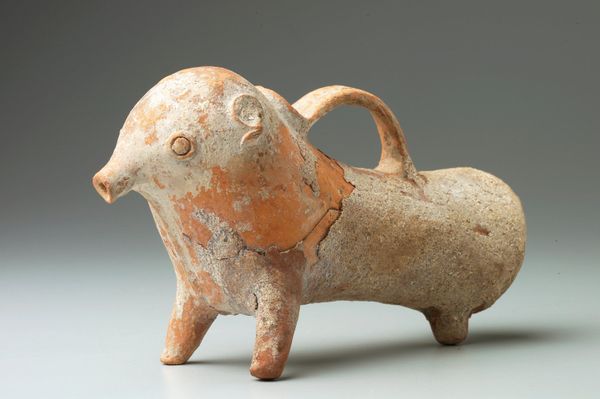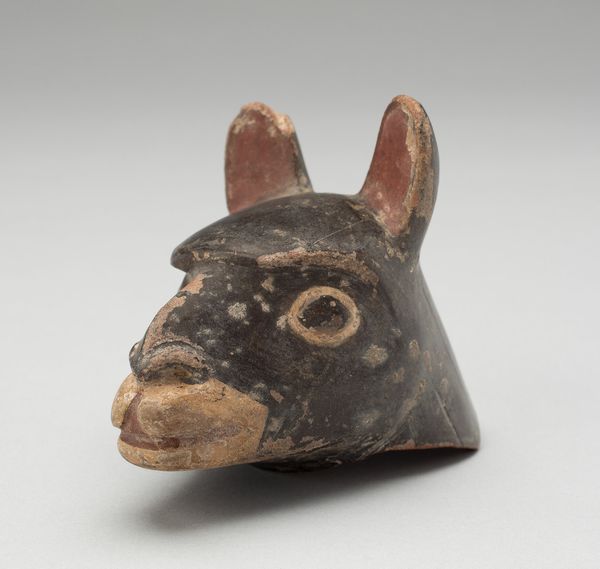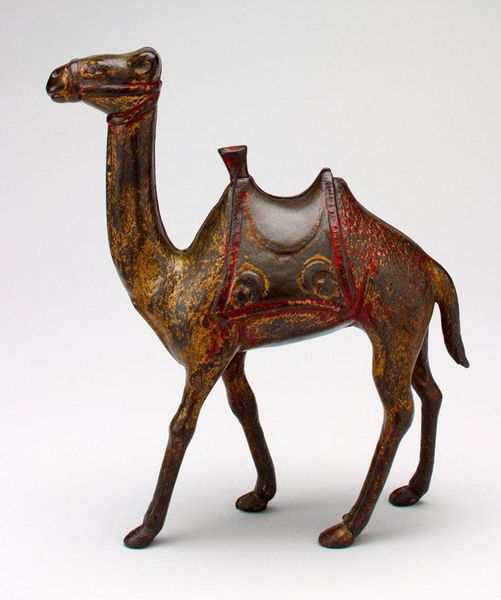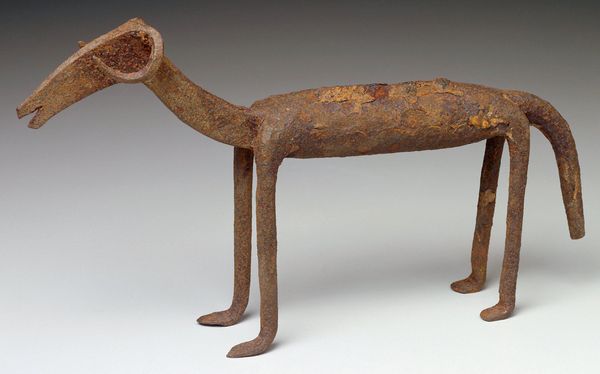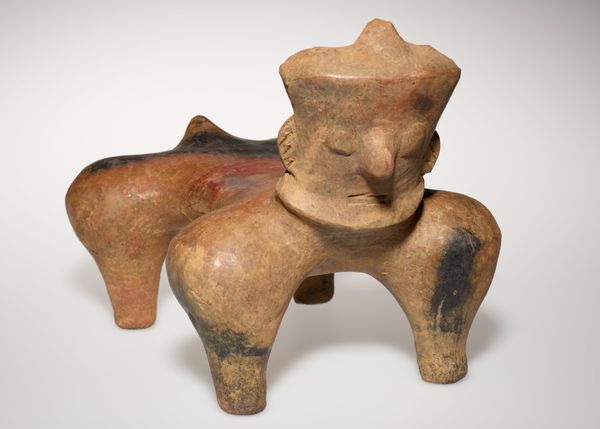
Incense Burner of Amir Saif al-Dunya wa’l-Din ibn Muhammad al-Mawardi 1166 - 1207
0:00
0:00
bronze, sculpture
#
animal
#
sculpture
#
bronze
#
sculpture
#
islamic-art
Dimensions: OveralL. H. 33 1/2 in. (85.1 cm) L. 32 1/2 in. (82.6 cm) W. 9 in. (22.9 cm) L. from heel of back foot to toe of front foot: 22 in. (55.9 cm) L. from toe of front foot to tip of nose: 4 in. (10.2 cm) L. from heel of back foot to tip of taiL. 7 in. (17.8 cm)
Copyright: Public Domain
This large, cast bronze incense burner in the shape of a zebu was created by Ja`far ibn Muhammad ibn `Ali, possibly in present-day Iran or Afghanistan. The zebu, a type of humped cattle, was often used to signify royalty, wealth, and power within the Islamic world. Consider the symbolism of this piece, commissioned by Amir Saif al-Dunya wa’l-Din ibn Muhammad al-Mawardi, a figure of power. Incense burners were not merely functional objects, they were also powerful symbols of status, faith, and cultural identity. The intricate designs covering the zebu, combined with its sheer size, would have signaled the commissioner’s prestige. The zebu exists as both a cultural symbol and a functional object. As you stand here, consider the intricate dance between power, identity, and artistry embodied in this singular object.
Comments
No comments
Be the first to comment and join the conversation on the ultimate creative platform.
